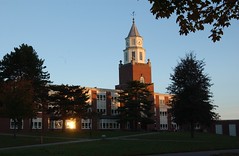Armah Kamara
EAP1 Worker’s Workshop 1
01/29/07
A vivid idea of the Navaho culture
In a World today full of many cultures (the shared beliefs and values of a particular group of people) some cultures have tried to influence other cultures in many ways such as, food, language, religion and so forth. The author explained how people attached strong beliefs and concepts to where they are from or the importance of being connected to something that make you feel recognize in a broader prospective. He emphasized that these objects are not only for decoration but also as a mark of distinction.
In his article,” My Navaho home in Los Angeles”, Thomas Whiterock (1995), gives detailed descriptions and meanings of items and symbols in his mother’s home to his friend, Tung, who is from a different cultural background. For example, he explains the difficulties faced when the Navaho people refused to change their staple food, corn to wheat in a province given them by the Scottish. This was an important aspect of their culture because it keeps them together as people of substance and integrity.
However, he further lamented that the Navaho home was full of rich items and symbols of both natural and artificial components, which attract the attention of people who come across these objects, and symbols because of their characteristic designs. In his text, he named the rain stick, a stick with a tube-like design, where seeds are placed in to make the sound of rain fall, which was used for a ceremony during the harvest season thanking their gods for giving them plentiful rain for their crops to grow. He also explains the importance of some colors, which played vital roles in their culture. Like, red, which means a symbol of wisdom, red and black meaning knowledge. He mentions natural objects like the silk butterfly, which was mainly respected as a messenger, taking their prayers to heaven, and most interestingly, the sunflowers, which grow as a symbol of favor from their gods.
In relation to his work, I believe that the Navaho culture is of great value in connecting people of the past to that of people who live today because you cannot live without the past to build the present, or without the present to build the future as we move from one generation to another. For example, the ladder in the Navaho home was used to get the children to their room, which was up in the Hogan, and this ladder has been transformed to form of stairs to get in the upper part of a house.
Even though, we move from country to country in search of better living conditions, people still eat their main diet as a mean of survival, which keeps the cultural heritage alive. For example, in Liberia, rice is our staple food and if I eat a day’s meal without rice, I would say, I have not eaten today because of the lack of rice.
It is good to keep a focus of your cultural past because no matter what it may have been like, someone will love and cherish it because it helps to keep us together and determine the right way forward in our journey in life.
Reference: Whiterock, T. (1995) My Navaho home in Los Angeles. In B. Lee (ed.) (1995). Celebrating Diversity: A multicultural reader (pp. 94-6). Lexington, MA: D.C. Health.
Thursday, February 08, 2007
A vivid idea of the Navaho culture
Posted by CESL at 9:41 AM
Subscribe to:
Post Comments (Atom)
 on
on 




1 comments:
Hey,
in a respectful way I have to say that this site it is not good and didn't help me in anything.
Please do it better,
Mariúna
Post a Comment